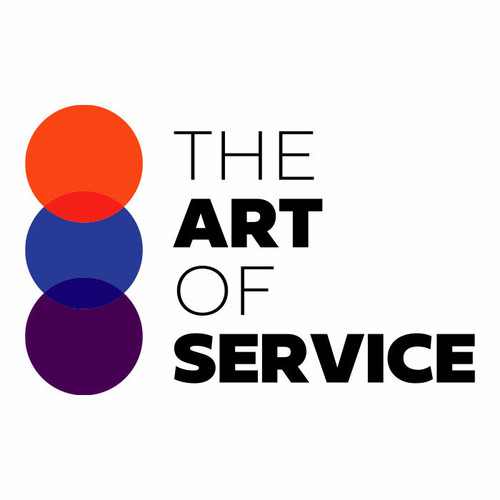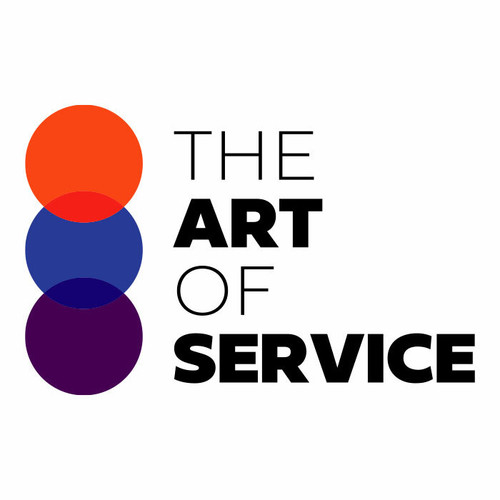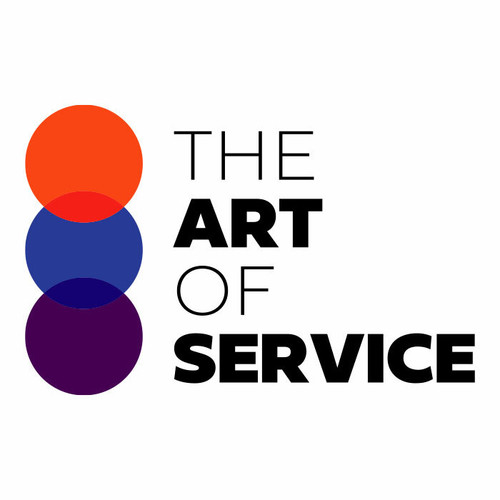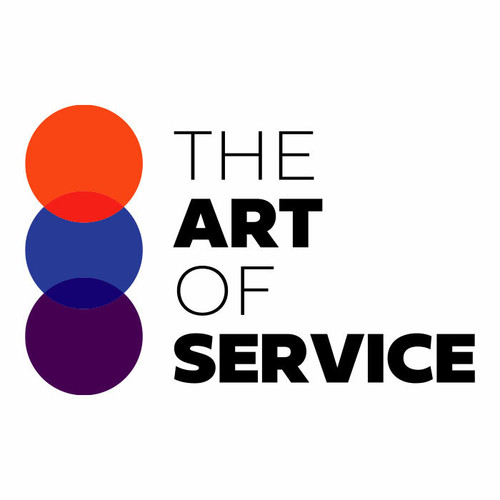Seek out, validate, and bring to the technology organization innovative Best Practices and ideas from the outside, with a particular emphasis on Application Development and integration of COTS solutions.
More Uses of the COTS Toolkit:
- Be accountable for developing, configuring and delivering COTS data solutions in support of Enterprise Security solutions.
- Integrate solutions with Commercial Off The Shelf (COTS) products using Web Service and Application Programming Interface (API) techniques.
- Be accountable for analyzing the results of COTS Gap Analysis and identifying and documenting the impacts to mission processes.
- Systematize: design, development or implementation phases (business or technical) for health and Human Services applications using system transfer, COTS, Custom Development or hybrid approaches.
- Warrant that your design develops and documents a Gap Analysis, details the functional capabilities satisfied by the COTS, and identifies strengths and weaknesses.
- Provide development activity support for custom Web Applications, APIs, Open Source Software, commercial Off The Shelf (COTS) components, and customized scripts and use an Agile Development approach.
- Secure that your group acts as internal consultant in the evaluation, selection, and installation of cloud hosted or commercial Off The Shelf (COTS) Database Applications.
- Evaluate and recommend COTS products and methodologies that can be acquired to provide interoperable, portable, and scalable information Technology Solutions.
- Warrant that your venture analyzes and evaluates Commercial Off The Shelf (COTS) products to assess the feasibility and usability of the product to best support operations that are related to the project.
- Arrange that your team complies; COTS software installation, documentation, configuration and maintenance.
- Control: Software Support deploy, install and troubleshoot Line Of Business (LOB) and commercial Off The Shelf (COTS) software utilizing desktop and Mobile Device Management tools.
- Govern: security COTS integration web proxy, email gateway, next generation firewall.
- Create and maintain web and desktop applications that augment and integrate Commercial Off The Shelf (COTS) solutions.
- Evaluate: integration of IAM technologies into COTS and Custom Applications.
- Arrange that your strategy complies; requisitions can consist of raw material, mechanical COTS, processing, and specialized machined/Fabricated hardware.
- Be accountable for integrating COTS and custom designed radar hardware into a large scale system.
- Develop complex processes, scripts, and framework to automate testing of all tiers of a number of COTS and custom developed applications.
- Follow industry practices of analysis, design, development, testing, deployment and maintenance/Production Support of COTS and custom databases and applications.
- Manage System Integration of COTS and or Custom Development.
- Evaluate, recommend, and implement Data Security solutions through Open Source and COTS tools.
- Be accountable for operating systems, utilities, packaged COTS Office Productivity Software, Business Applications, etc.
- Install and configure COTS software, and perform configuration and maintenance in Linux environments.
- Ensure you establish; lead installation, configuration, integration and training of commercial Off The Shelf (COTS) Cyber products.
- Pilot: research and analyze data, as Vendor Products, COTS components, specifications and manuals to determine feasibility of design or applications.
- Formulate: implement COTS and customized comprehensive application Security Policies to identify and protect web portals and Web Applications from Cybersecurity threats.
- Secure that your corporation provides Technical Support for the configuration and implementation of COTS (Commercial Off The Shelf) and custom developed Software Applications related to Enterprise Systems.
- Be certain that your design develops and administers automated extract;transforms, and loads (ETL) routines using custom scripts or COTS products.
- Evaluate and recommend COTS applications and methodologies that can be acquired to provide interoperable, portable, and scalable information Technology Solutions.
- Establish that your design identifies, evaluate, and recommends improvements to relevant COTS Database Management and monitoring tools.
Save time, empower your teams and effectively upgrade your processes with access to this practical COTS Toolkit and guide. Address common challenges with best-practice templates, step-by-step Work Plans and maturity diagnostics for any COTS related project.
Download the Toolkit and in Three Steps you will be guided from idea to implementation results.
The Toolkit contains the following practical and powerful enablers with new and updated COTS specific requirements:
STEP 1: Get your bearings
Start with...
- The latest quick edition of the COTS Self Assessment book in PDF containing 49 requirements to perform a quickscan, get an overview and share with stakeholders.
Organized in a Data Driven improvement cycle RDMAICS (Recognize, Define, Measure, Analyze, Improve, Control and Sustain), check the…
- Example pre-filled Self-Assessment Excel Dashboard to get familiar with results generation
Then find your goals...
STEP 2: Set concrete goals, tasks, dates and numbers you can track
Featuring 999 new and updated case-based questions, organized into seven core areas of Process Design, this Self-Assessment will help you identify areas in which COTS improvements can be made.
Examples; 10 of the 999 standard requirements:
- Does management have the right priorities among projects?
- What is the best design framework for COTS organization now that, in a post industrial-age if the top-down, command and control model is no longer relevant?
- Is there a COTS Communication Plan covering who needs to get what information when?
- Do you feel that more should be done in the COTS area?
- Where is it measured?
- Is there an action plan in case of emergencies?
- To whom do you add value?
- What are the Strategic Priorities for this year?
- Where do you need COTS improvement?
- How do you measure variability?
Complete the self assessment, on your own or with a team in a workshop setting. Use the workbook together with the self assessment requirements spreadsheet:
- The workbook is the latest in-depth complete edition of the COTS book in PDF containing 994 requirements, which criteria correspond to the criteria in...
Your COTS self-assessment dashboard which gives you your dynamically prioritized projects-ready tool and shows your organization exactly what to do next:
- The Self-Assessment Excel Dashboard; with the COTS Self-Assessment and Scorecard you will develop a clear picture of which COTS areas need attention, which requirements you should focus on and who will be responsible for them:
- Shows your organization instant insight in areas for improvement: Auto generates reports, radar chart for maturity assessment, insights per process and participant and bespoke, ready to use, RACI Matrix
- Gives you a professional Dashboard to guide and perform a thorough COTS Self-Assessment
- Is secure: Ensures offline Data Protection of your Self-Assessment results
- Dynamically prioritized projects-ready RACI Matrix shows your organization exactly what to do next:
STEP 3: Implement, Track, follow up and revise strategy
The outcomes of STEP 2, the self assessment, are the inputs for STEP 3; Start and manage COTS projects with the 62 implementation resources:
- 62 step-by-step COTS Project Management Form Templates covering over 1500 COTS project requirements and success criteria:
Examples; 10 of the check box criteria:
- Cost Management Plan: Eac -estimate at completion, what is the total job expected to cost?
- Activity Cost Estimates: In which phase of the Acquisition Process cycle does source qualifications reside?
- Project Scope Statement: Will all COTS project issues be unconditionally tracked through the Issue Resolution process?
- Closing Process Group: Did the COTS Project Team have enough people to execute the COTS Project Plan?
- Source Selection Criteria: What are the guidelines regarding award without considerations?
- Scope Management Plan: Are Corrective Actions taken when actual results are substantially different from detailed COTS Project Plan (variances)?
- Initiating Process Group: During which stage of Risk planning are risks prioritized based on probability and impact?
- Cost Management Plan: Is your organization certified as a supplier, wholesaler, regular dealer, or manufacturer of corresponding products/supplies?
- Procurement Audit: Was a formal review of tenders received undertaken?
- Activity Cost Estimates: What procedures are put in place regarding bidding and cost comparisons, if any?
Step-by-step and complete COTS Project Management Forms and Templates including check box criteria and templates.
1.0 Initiating Process Group:
- 1.1 COTS project Charter
- 1.2 Stakeholder Register
- 1.3 Stakeholder Analysis Matrix
2.0 Planning Process Group:
- 2.1 COTS Project Management Plan
- 2.2 Scope Management Plan
- 2.3 Requirements Management Plan
- 2.4 Requirements Documentation
- 2.5 Requirements Traceability Matrix
- 2.6 COTS Project Scope Statement
- 2.7 Assumption and Constraint Log
- 2.8 Work Breakdown Structure
- 2.9 WBS Dictionary
- 2.10 Schedule Management Plan
- 2.11 Activity List
- 2.12 Activity Attributes
- 2.13 Milestone List
- 2.14 Network Diagram
- 2.15 Activity Resource Requirements
- 2.16 Resource Breakdown Structure
- 2.17 Activity Duration Estimates
- 2.18 Duration Estimating Worksheet
- 2.19 COTS project Schedule
- 2.20 Cost Management Plan
- 2.21 Activity Cost Estimates
- 2.22 Cost Estimating Worksheet
- 2.23 Cost Baseline
- 2.24 Quality Management Plan
- 2.25 Quality Metrics
- 2.26 Process Improvement Plan
- 2.27 Responsibility Assignment Matrix
- 2.28 Roles and Responsibilities
- 2.29 Human Resource Management Plan
- 2.30 Communications Management Plan
- 2.31 Risk Management Plan
- 2.32 Risk Register
- 2.33 Probability and Impact Assessment
- 2.34 Probability and Impact Matrix
- 2.35 Risk Data Sheet
- 2.36 Procurement Management Plan
- 2.37 Source Selection Criteria
- 2.38 Stakeholder Management Plan
- 2.39 Change Management Plan
3.0 Executing Process Group:
- 3.1 Team Member Status Report
- 3.2 Change Request
- 3.3 Change Log
- 3.4 Decision Log
- 3.5 Quality Audit
- 3.6 Team Directory
- 3.7 Team Operating Agreement
- 3.8 Team Performance Assessment
- 3.9 Team Member Performance Assessment
- 3.10 Issue Log
4.0 Monitoring and Controlling Process Group:
- 4.1 COTS project Performance Report
- 4.2 Variance Analysis
- 4.3 Earned Value Status
- 4.4 Risk Audit
- 4.5 Contractor Status Report
- 4.6 Formal Acceptance
5.0 Closing Process Group:
- 5.1 Procurement Audit
- 5.2 Contract Close-Out
- 5.3 COTS project or Phase Close-Out
- 5.4 Lessons Learned
Results
With this Three Step process you will have all the tools you need for any COTS project with this in-depth COTS Toolkit.
In using the Toolkit you will be better able to:
- Diagnose COTS projects, initiatives, organizations, businesses and processes using accepted diagnostic standards and practices
- Implement evidence-based Best Practice strategies aligned with overall goals
- Integrate recent advances in COTS and put Process Design strategies into practice according to Best Practice guidelines
Defining, designing, creating, and implementing a process to solve a business challenge or meet a business objective is the most valuable role; In EVERY company, organization and department.
Unless you are talking a one-time, single-use project within a business, there should be a process. Whether that process is managed and implemented by humans, AI, or a combination of the two, it needs to be designed by someone with a complex enough perspective to ask the right questions. Someone capable of asking the right questions and step back and say, 'What are we really trying to accomplish here? And is there a different way to look at it?'
This Toolkit empowers people to do just that - whether their title is entrepreneur, manager, consultant, (Vice-)President, CxO etc... - they are the people who rule the future. They are the person who asks the right questions to make COTS investments work better.
This COTS All-Inclusive Toolkit enables You to be that person.
Includes lifetime updates
Every self assessment comes with Lifetime Updates and Lifetime Free Updated Books. Lifetime Updates is an industry-first feature which allows you to receive verified self assessment updates, ensuring you always have the most accurate information at your fingertips.







